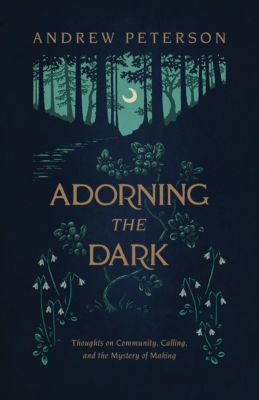
Christians bear the responsibility of courageously telling our stories, but we should also hold ourselves accountable for doing so creatively.
By Trey Van Camp
“The most powerful person in the world is a storyteller.” Steve Jobs uttered these words in 1994 when he was the CEO of Pixar.
And a recent study from Lifeway Research shows Jobs was on to something. Perhaps to the surprise of many, the research found there is still curiosity about religion, and more than half of Americans still believe it’s important to have certainty about going to heaven. I was especially struck by their findings about personal stories: “When meeting someone new, 71% of Americans are at least open to hearing about that person’s life story. A similar number (69%) say they’re at least open to hearing the life story from someone new if it includes faith.”
Everyone has a story, and it turns out our stories can be catalysts for sharing the gospel. But in my experience, knowing your story is important is only half the battle.
Christians bear the responsibility of courageously telling our stories, but we should also hold ourselves accountable for telling our stories creatively. — @treyvancamp Click To TweetFor the past five years, I’ve spent hundreds of hours trying to become a better storyteller through the medium of YouTube. Inspired by Casey Neistat, a popular YouTuber and the “godfather of vlogging,” I bought a Sony a6300 off Craigslist and started to publish videos three times a week. The first couple of years were rough because I didn’t know how to edit my story in a way that engaged audiences. In hindsight, there were two massive mistakes I kept making.
- I included too much of my footage in the story.
- I only organized my story in chronological order.
YouTube has taught me a critical piece to the puzzle of storytelling: how you tell your story matters. Two editors can have the same footage, but one could produce a video that changes lives while the other produces a video that’s completely ignored. How is this possible? The best storytellers know what to leave out and where to place certain elements of the story. The same is true with the stories of our lives.
Christians bear the responsibility of courageously telling our stories, but we should also hold ourselves accountable for telling our stories creatively. How you tell your story matters.
In cinema, social media, and face-to-face conversations, there are three essential elements to every good story.
1. Tension
To grab attention, you must first grab a tension. On YouTube, you have ten to fifteen seconds to introduce the tension, or your retention will fall dramatically. You should quickly introduce a conflict that demands a resolution, or the rest of your story will fall on deaf ears. Aaron Sorkin, creator of The West Wing, boils “story” down to two words: intention and obstacle. These two concepts create the tension that grabs our attention.
When sharing our stories, it’s best to start with sin and brokenness. Like everyone else, we intended to live a good life, but the obstacles started to stack against us. Spend time describing the life you always longed to live but could never seem to accomplish. The world likes to point to external obstacles, but the gospel empowers us to acknowledge our own internal obstacle called sin. When our stories include the sins of our past and the pain we’ve endured, people are more likely to draw close because it’s a pain point they’ve been seeking to resolve their entire lives.
Don’t gloss over the tension, or else they will gloss over the rest.
2. Intervention
The second act of a good story sets the character on a journey toward transformation, but a good story never allows the character to get it right on the first try. The best movies make the audience think the protagonist is safe just before everything falls apart. Directors aren’t including failed attempts at a solution just for watch time. They know failure is an essential element to any story.
Jesus is magnified when we share the ways our false saviors have failed us. Share the story of how you made your spouse into your god, and it damaged everyone involved. Get honest and personal about your obsession with greed to cover up the insecurities you were never willing to face. Tell the story of your self-righteous or self-rejecting behavior that led to your demise and depression.
We tend to shy away from this part of the story because it makes us look bad. I tell YouTubers this all the time: personal is more powerful than professional. This vulnerability generates trust and helps them identify with your story in a powerful way.
Personal is more powerful than professional. — @treyvancamp Click To TweetLike every good story, you eventually need to arrive at a solution. Where every other savior failed you, Jesus never did.
Jesus gives what you were looking for in a spouse: unconditional love.
Jesus gives what you were looking for in money: everlasting security.
Jesus gives what your self-righteous behavior was trying to secure: acceptance.
Share the ways Jesus is better.
3. Invitation
Lastly, every good story inspires the audience to do something about it. Stories subversively shape us and cause us to reflect on our own beliefs and behaviors. Jesus was the master at this. In his book “The Contemplative Pastor,” Eugene Peterson explains:
“As people heard Jesus tell these stories, they saw at once that they weren’t about God, so there was nothing in them threatening their own sovereignty. They relaxed their defenses. They walked away perplexed, wondering what they meant, the stories lodged in their imagination. And then, like a time bomb, they would explode in their unprotected hearts. An abyss opened up at their very feet. He was talking about God; they had been invaded!”
It isn’t a good story until the invitation has been extended. Invite people into the journey of transformation by bringing them into your local church community. Watch and wait for the time bomb to go off in their hearts.
Tension. Intervention. Invitation.
Happy storytelling!

Trey Van Camp
Trey is a 4th generation pastor. On January 10, 2016, he planted a church in Queen Creek, Arizona (formerly known as Heart Cry Gathering) and renamed it to Passion Creek Church in June 2017.












